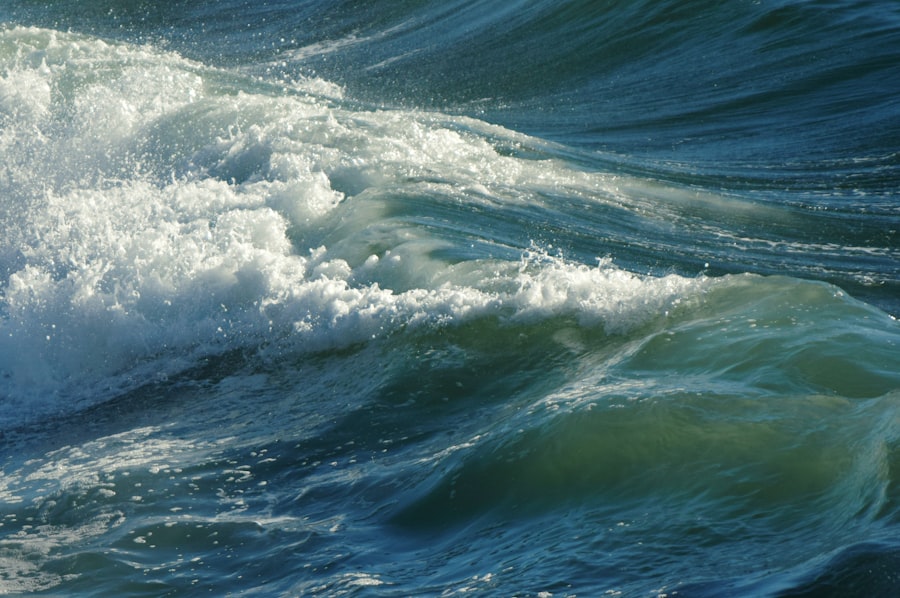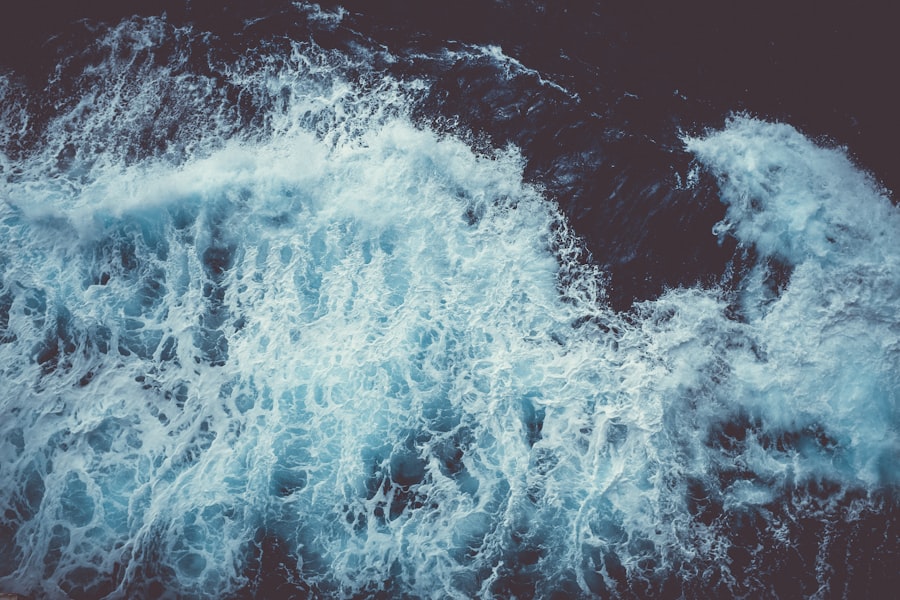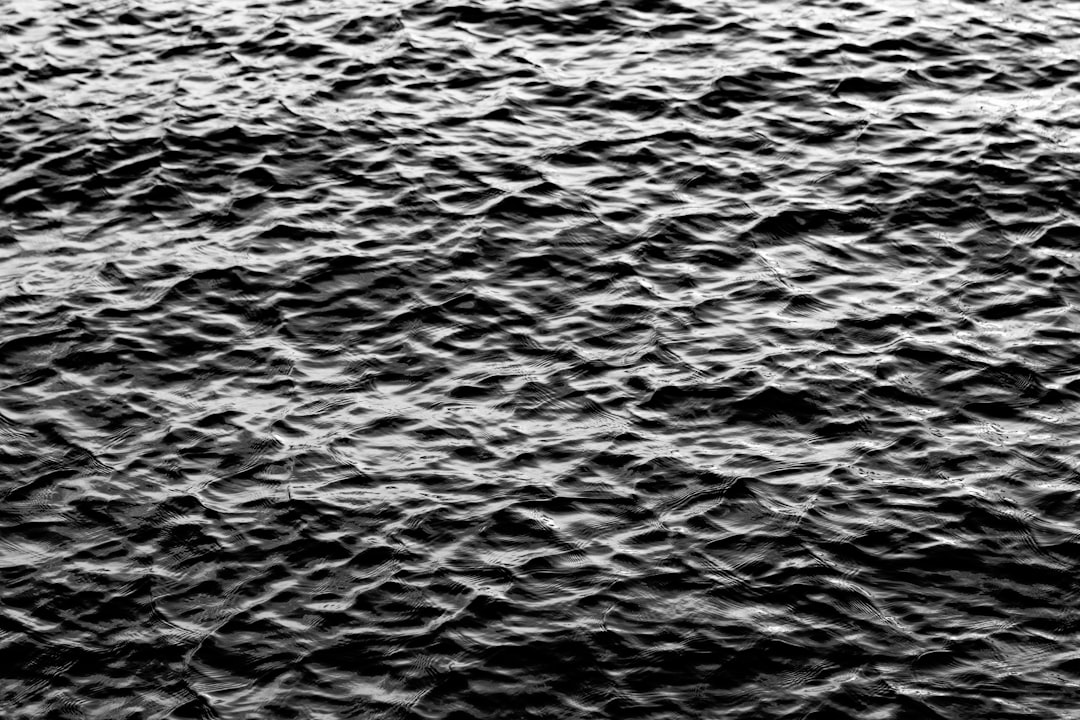The Drake Passage, a body of water that separates South America from Antarctica, is renowned for its tumultuous seas and unpredictable weather. Stretching approximately 600 miles, this passage is often considered one of the most challenging maritime routes in the world. Named after the English explorer Sir Francis Drake, who navigated these waters in the late 16th century, the Drake Passage has become a rite of passage for adventurers and explorers alike.
Its significance extends beyond mere geography; it serves as a gateway to the pristine wilderness of Antarctica, drawing countless travelers eager to experience its breathtaking landscapes and unique wildlife. The waters of the Drake Passage are notorious for their rough conditions, with strong currents and high winds that can create formidable waves. This unpredictability has earned it the moniker “the Drake Shake,” a term that aptly describes the experience of crossing this stretch of ocean.
Despite its challenges, the passage is also a place of unparalleled beauty, where the vastness of the Southern Ocean meets the icy shores of Antarctica. For many, traversing the Drake Passage is not just a journey; it is an adventure that tests one’s resolve and spirit while offering glimpses into one of the last great frontiers on Earth.
Key Takeaways
- The Drake Passage is a challenging and iconic stretch of water that connects the Atlantic and Pacific Oceans.
- Essential equipment and gear for the journey include waterproof clothing, sturdy footwear, and sea sickness medication.
- Strategies for dealing with rough seas include staying hydrated, getting plenty of rest, and staying low and centered on the ship.
- Navigating the passage safely and efficiently requires careful planning, communication with the expedition team, and staying informed about weather conditions.
- Mental preparation for the journey involves staying positive, practicing relaxation techniques, and focusing on the unique wildlife and scenery.
Preparing for the Journey: Essential Equipment and Gear
Preparation is key when embarking on a journey across the Drake Passage. The unpredictable nature of the waters necessitates careful planning and the right equipment to ensure safety and comfort. Travelers should begin by investing in high-quality waterproof gear, including jackets, pants, and boots designed to withstand harsh conditions.
Layering is essential; thermal base layers, insulating mid-layers, and waterproof outer layers will help regulate body temperature while providing protection against wind and rain. In addition to clothing, essential gear includes personal items such as sunglasses with UV protection, hats to shield against sun exposure, and gloves to keep hands warm. A reliable backpack is also crucial for carrying personal belongings and gear during excursions.
Furthermore, travelers should consider packing seasickness remedies, whether over-the-counter medications or natural alternatives like ginger or acupressure bands. Having a well-stocked first aid kit can also provide peace of mind during the journey, ensuring that minor ailments can be addressed promptly.
Weathering the Storm: Strategies for Dealing with Rough Seas

Crossing the Drake Passage often involves navigating through rough seas, which can be daunting for even the most seasoned travelers. To weather the storm effectively, it is important to adopt strategies that promote comfort and safety. One of the most effective methods is to stay informed about weather conditions and sea forecasts.
Many expedition teams provide updates on expected weather patterns, allowing travelers to mentally prepare for potential turbulence. Another key strategy is to maintain a stable center of gravity while on board. This can be achieved by keeping feet shoulder-width apart and using handrails when moving around the vessel.
Staying hydrated and nourished is equally important; consuming light meals can help prevent nausea while providing necessary energy. Additionally, finding a comfortable spot on the ship—preferably in the middle where motion is less pronounced—can significantly reduce feelings of seasickness. Engaging in light activities or distractions, such as reading or watching movies, can also help take one’s mind off the rolling waves.
Navigating the Passage: Tips for Safe and Efficient Travel
| Travel Tips | Description |
|---|---|
| Plan Ahead | Research your destination, check for travel advisories, and make necessary reservations. |
| Pack Light | Bring only essential items to make your journey more manageable. |
| Stay Informed | Keep updated on local news and weather conditions to ensure safe travel. |
| Secure Your Belongings | Keep your valuables safe and secure to avoid any potential theft or loss. |
| Stay Hydrated | Drink plenty of water to stay hydrated, especially during long journeys. |
Navigating the Drake Passage requires not only physical preparation but also an understanding of maritime practices that enhance safety and efficiency. Travelers should familiarize themselves with the ship’s layout and safety protocols upon boarding. Knowing where life jackets are stored and understanding emergency procedures can instill confidence during rough patches.
Communication with crew members is vital; they are trained professionals who can provide guidance on navigating challenging conditions. Listening to their advice regarding movement on board and participating in safety drills can further enhance one’s sense of security. Additionally, travelers should be mindful of their surroundings and respect any instructions given by crew members during turbulent weather.
By remaining alert and engaged, passengers can contribute to a safer environment for everyone on board.
Overcoming Fear: Mental Preparation for the Journey
The prospect of crossing the Drake Passage can evoke feelings of fear or anxiety in many travelers. Acknowledging these emotions is the first step toward overcoming them. Mental preparation plays a crucial role in building resilience and confidence for the journey ahead.
Visualization techniques can be particularly effective; imagining oneself successfully navigating through rough seas can help alleviate fears and foster a positive mindset. Practicing mindfulness and relaxation techniques can also be beneficial. Deep breathing exercises or meditation can help calm nerves before embarking on this adventure.
Engaging in conversations with fellow travelers who share similar concerns can create a supportive environment where fears are normalized and addressed collectively. Ultimately, embracing the unknown as part of the adventure can transform apprehension into excitement, allowing travelers to fully immerse themselves in the experience.
Wildlife Encounters: Observing the Unique Fauna of the Drake Passage

One of the most captivating aspects of crossing the Drake Passage is the opportunity to observe its unique wildlife.
Travelers should remain vigilant during their journey, as sightings of these incredible creatures can occur at any moment.
The thrill of spotting a breaching humpback whale or a colony of penguins on an ice floe adds an exhilarating dimension to the crossing. To enhance wildlife encounters, travelers are encouraged to bring binoculars and cameras equipped with zoom lenses. These tools allow for closer observation without disturbing the animals in their natural habitat.
Additionally, participating in guided excursions led by knowledgeable naturalists can provide valuable insights into the behaviors and characteristics of various species encountered along the way. Such experiences not only enrich one’s understanding of marine ecosystems but also foster a deeper appreciation for the delicate balance of life in this remote region.
The Importance of Experienced Guides: Finding the Right Expedition Team
Choosing an experienced expedition team is paramount when planning a journey across the Drake Passage. The right guides not only ensure safety but also enhance the overall experience by sharing their expertise about the region’s history, geography, and wildlife. Travelers should seek out companies with a proven track record in polar expeditions, as these organizations typically employ knowledgeable staff who are well-versed in navigating challenging conditions.
An experienced team will prioritize passenger safety while providing engaging educational opportunities throughout the journey. They will be adept at reading weather patterns and adjusting itineraries accordingly to maximize wildlife sightings and minimize discomfort during rough seas. Furthermore, guides who are passionate about their work often create a sense of camaraderie among passengers, fostering connections that enrich the overall experience.
Staying Healthy at Sea: Managing Seasickness and Other Ailments
Maintaining health during a voyage across the Drake Passage is essential for an enjoyable experience. Seasickness is a common concern for many travelers; however, there are several strategies to manage this ailment effectively. In addition to preemptive measures such as taking medication before departure, staying hydrated and consuming light snacks can help mitigate symptoms.
Engaging in gentle movement on board can also alleviate discomfort; walking around or participating in onboard activities can distract from feelings of nausea.
It is important for travelers to communicate any health concerns with crew members, who are trained to assist passengers experiencing discomfort.
Capturing the Moment: Photography Tips for Documenting the Journey
Documenting a journey across the Drake Passage through photography allows travelers to capture memories that will last a lifetime. To make the most of this opportunity, it is essential to be prepared with appropriate equipment. A camera with manual settings offers greater flexibility in varying light conditions, while extra batteries and memory cards ensure that no moment goes undocumented.
Timing is crucial when photographing wildlife; patience is key when waiting for that perfect shot of a whale breaching or seabirds diving into the water. Early morning or late afternoon light often provides stunning backdrops for landscape photography as well. Additionally, travelers should consider using polarizing filters to reduce glare from water surfaces and enhance colors in their images.
By being mindful of composition and lighting, photographers can create striking visuals that encapsulate their adventure across this remarkable passage.
Tales of Triumph: Inspiring Stories of Conquering the Drake Passage
Throughout history, countless adventurers have crossed the Drake Passage, each with their own unique stories of triumph over adversity. From early explorers who braved uncharted waters to modern-day travelers seeking adventure, these tales serve as inspiration for those contemplating their own journey across this formidable passage. Many recount moments of fear transformed into exhilaration as they navigated through turbulent seas or encountered breathtaking landscapes.
These stories often highlight personal growth and resilience; individuals who faced their fears head-on emerged with newfound confidence and appreciation for nature’s raw beauty. Whether it was overcoming seasickness or witnessing awe-inspiring wildlife encounters, each tale reflects a shared spirit of adventure that unites those who dare to traverse this iconic route.
The Legacy of the Drake Passage: Reflecting on the Journey and Its Impact
The legacy of crossing the Drake Passage extends far beyond mere travel; it encompasses personal transformation, environmental awareness, and a deeper connection to our planet’s natural wonders. For many travelers, this journey serves as a reminder of humanity’s place within nature—a humbling experience that fosters respect for fragile ecosystems and encourages stewardship of our oceans. As adventurers return home with stories to share and memories etched in their minds, they often become ambassadors for conservation efforts aimed at protecting regions like Antarctica from climate change and human impact.
The experience of crossing the Drake Passage leaves an indelible mark on those who undertake it—a testament to both individual courage and collective responsibility toward preserving our planet’s most pristine environments for future generations to explore and cherish.
The Drake Passage is notorious for its treacherous waters and some of the worst waves encountered by sailors. This narrow body of water between the southern tip of South America and Antarctica is a formidable challenge for even the most experienced mariners. For those interested in learning more about the geographical and historical significance of the Drake Passage, a related article can be found on MyGeoQuest. This article delves into the unique conditions that contribute to the passage’s fearsome reputation and offers insights into the experiences of those who have navigated its perilous waters. For more information, you can read the full article on the MyGeoQuest website.
WATCH NOW! Drake Passage: Earth’s Deadliest Waters Revealed
FAQs
What is the Drake Passage?
The Drake Passage is the body of water between the southern tip of South America and the northern tip of the Antarctic Peninsula. It is known for its notoriously rough seas and challenging sailing conditions.
Why are the waves in the Drake Passage considered the worst?
The waves in the Drake Passage are considered the worst due to the combination of strong winds, powerful currents, and the lack of any significant landmass to break up the waves. This creates a perfect storm for extremely rough and unpredictable sea conditions.
How high can the waves get in the Drake Passage?
Waves in the Drake Passage can reach heights of up to 30 meters (nearly 100 feet) during severe storms, making it one of the most treacherous stretches of water for sailors and seafarers.
What makes sailing through the Drake Passage so challenging?
Sailing through the Drake Passage is challenging due to the extreme weather conditions, including strong winds, high waves, and rapidly changing weather patterns. The lack of nearby land also means there are no natural shelters or safe harbors for ships to seek refuge.
Are there any safety measures in place for ships traveling through the Drake Passage?
Ships traveling through the Drake Passage are required to adhere to strict safety protocols, including having experienced crew members, appropriate safety equipment, and following weather forecasts closely. Many ships also choose to have ice-strengthened hulls and advanced stabilization systems to navigate the rough waters more effectively.
